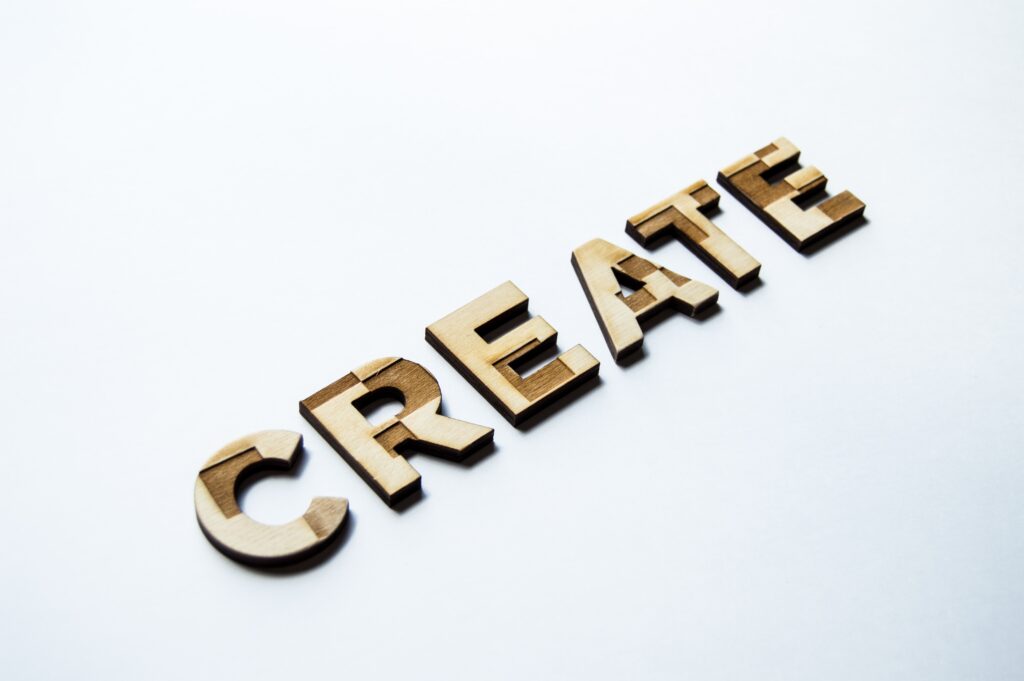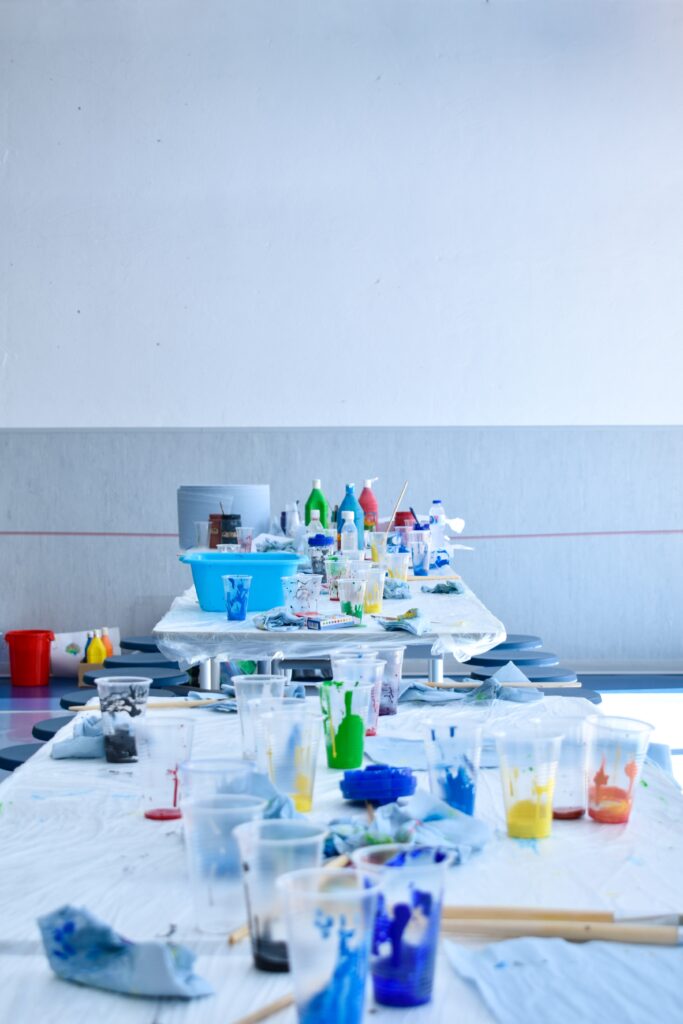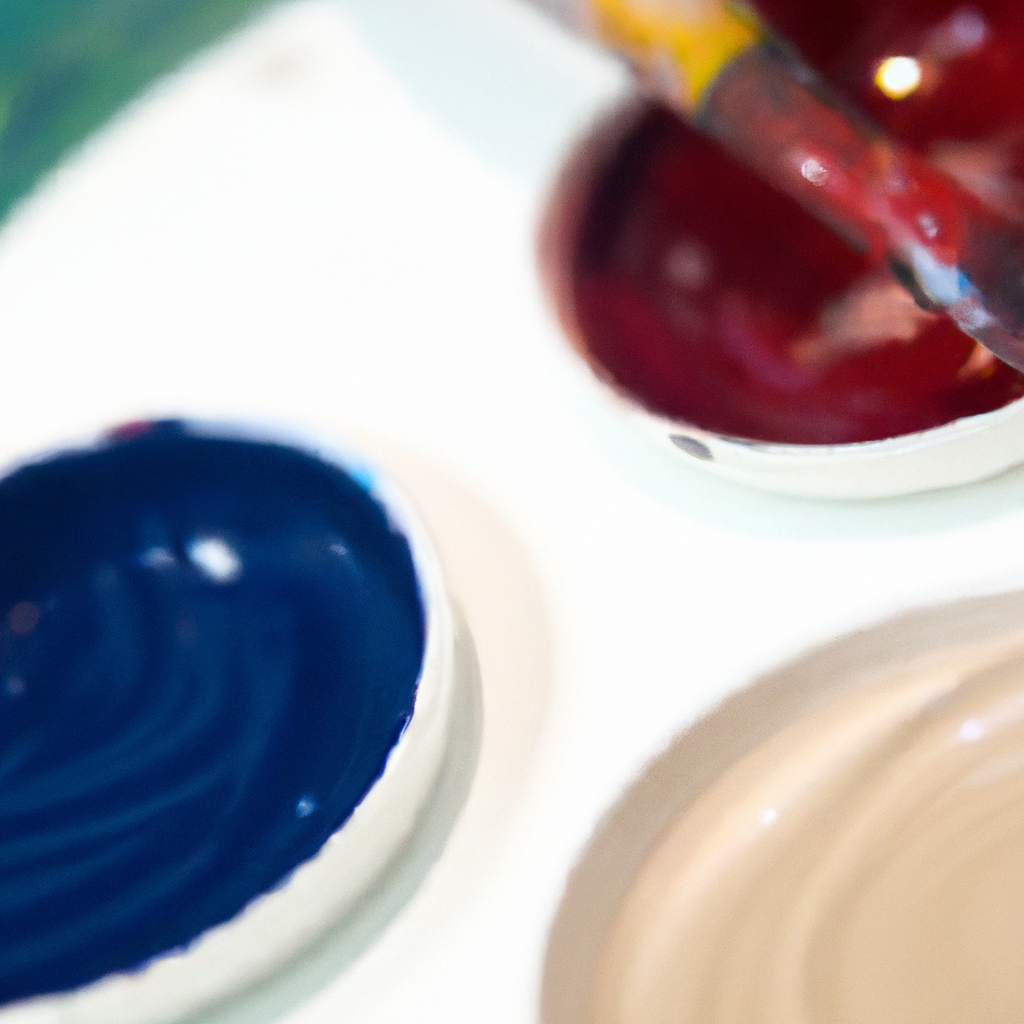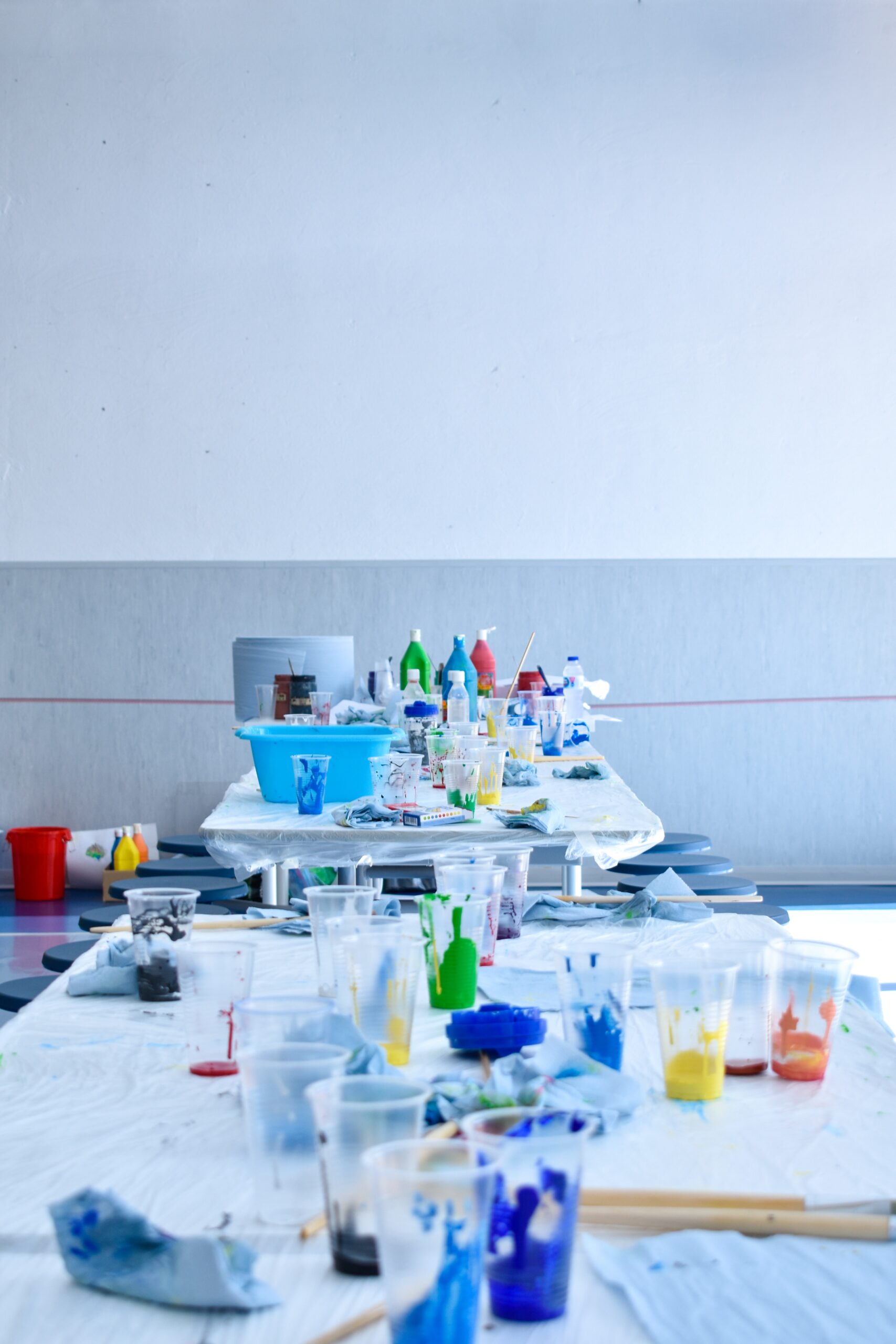In the realm of the art world, gouache paint has made a name for itself as a versatile medium that allows artists to create vibrant and opaque paintings. However, not all gouache paints are created equal. Understanding the different qualities of gouache paint is essential for artists seeking to elevate their work to new heights. In this article, you will explore the various characteristics that distinguish different types of gouache paint, enabling you to make informed decisions when selecting the perfect medium for your artistic endeavors.
Opacity
Definition of opacity
Opacity refers to the property of a substance, in this case, gouache paint, that determines how much it allows light to pass through it. In simpler terms, it measures how transparent or opaque the paint appears on a surface. When a paint has high opacity, it means that it is more opaque and less light can pass through it, resulting in a solid, dense color. On the other hand, paints with low opacity are more transparent, allowing more light to pass through and creating a more translucent effect. The opacity of gouache paint is an important factor to consider as it impacts color mixing and the overall visual impact of artworks.
Different levels of opacity
Gouache paints are available in various levels of opacity, allowing artists to achieve different effects in their artworks. The opacity of gouache paint can be categorized into three main levels: transparent, semi-opaque, and opaque.
Transparent gouache paints are highly translucent, allowing the underlying colors and textures to show through. These paints are often used for glazing techniques or when a more delicate, subtle effect is desired.
Semi-opaque gouache paints have a moderate level of opacity. They provide a balance between transparency and opacity, allowing for some layering without completely hiding the underlying colors. Semi-opaque gouache is commonly used for building up layers and creating depth in artworks.
Opaque gouache paints have the highest level of opacity, completely covering the underlying layers. These paints have a solid, dense appearance, making them suitable for creating bold and vibrant color effects. Opaque gouache is often preferred for illustrations, graphic design, and artworks that require strong, defined areas of color.
How opacity affects color mixing
The opacity of gouache paint plays a significant role in color mixing. When working with opaque gouache, colors blend differently compared to transparent or semi-opaque gouache. Mixing opaque colors tends to result in more vibrant, intense hues, while mixing transparent or semi-opaque colors can create softer, muted tones.
Additionally, the opacity of gouache allows for easy color layering. With opaque gouache, artists can apply one layer of paint on top of another and achieve a solid, opaque result without any underlying colors showing through. This quality makes gouache a versatile medium for building up complex color compositions.
Understanding the levels of opacity in gouache paints enables artists to make informed decisions and select the appropriate type of paint for their desired effects. Whether one wishes to create a transparent glaze or a bold, opaque statement, the opacity of gouache is a crucial consideration in achieving the desired outcome.
Consistency
Thick or buttery gouache
Thick or buttery gouache refers to a denser consistency of the paint. This consistency is often achieved by using larger amounts of pigment in the paint formula. Thick gouache has a dense, creamy texture that holds its shape on the palette and brush, providing artists with more control and precision while painting. The thickness of gouache allows for easy application of bold, solid strokes of color. It is particularly useful for creating impasto effects and building up texture in artworks.
Artists who prefer creating highly textured and expressive pieces may find thick gouache ideal for their needs. The pronounced thickness of the paint adds a tactile element to the artwork, enhancing the visual impact and creating a unique surface quality.
Fluid or watery gouache
Fluid or watery gouache, as the name suggests, refers to gouache paint with a thinner consistency. This consistency is achieved by adding more water or a specially formulated medium to the paint. Fluid gouache flows smoothly and easily, allowing for effortless brushwork and the creation of delicate, translucent layers.
Artists who prefer a more fluid gouache consistency often use techniques such as glazing or transparent washes. These techniques allow the underlying layers to show through, creating a sense of depth and luminosity. Fluid gouache is also suitable for creating smooth gradients and subtle color transitions.
Choosing the right consistency for your project
The choice between thick or fluid gouache ultimately depends on the artist’s preferences and the specific requirements of the project. Consider the desired effect, the level of detail, and the overall texture you aim to achieve in your artwork.
For bold, textured artworks or when working on a larger scale, thick gouache can provide the necessary depth and dimension. Thick gouache is also favored by artists who enjoy the tactile experience of painting with a thicker medium.
On the other hand, fluid gouache is well-suited for detailed work, transparent washes, or when a smoother, more subtle finish is desired. It allows for easier layering and the creation of nuanced color effects.
Experimenting with different consistencies of gouache can help artists discover their preferred working style and achieve the desired results in their artworks. It is also worth noting that the consistency of gouache can be customized by adding water or mediums, allowing for further versatility and artistic exploration.

This image is property of images.unsplash.com.
Coverage
Understanding coverage in gouache
Coverage in gouache refers to how well the paint hides or conceals the underlying surface. Artists often evaluate the coverage of gouache based on the opacity of the paint and its ability to achieve solid, opaque layers. The coverage of gouache is an important consideration, as it affects the final appearance and overall visual impact of the artwork.
Opaque coverage vs. translucent coverage
Gouache paints with high opacity offer excellent coverage, completely concealing the surface beneath them. This type of coverage is often desirable when artists require bold, vibrant colors and want to achieve a solid, uninterrupted appearance. Opaque coverage ensures that the underlying colors or textures do not show through, resulting in a more uniform and opaque finish.
However, some artists may prefer a more transparent or translucent coverage for their artwork. Translucent coverage allows some of the underlying surface to show through, giving a sense of depth and richness to the colors. With translucent coverage, artists can create delicate layers and glazes, allowing for subtle color variations.
Factors affecting coverage
Several factors can influence the coverage of gouache paints. The quality and pigmentation of the paint itself play a significant role. High-quality gouache paints typically have a higher concentration of pigments, resulting in better coverage and more vibrant colors.
The consistency of gouache also affects its coverage. Thick gouache paints generally provide greater coverage due to their high pigment concentration. Conversely, when gouache is thinned with water or a medium, its coverage may become more translucent, allowing underlying layers to show through.
The surface on which gouache is applied will also affect coverage. Gouache tends to adhere well to most surfaces, including paper, canvas, and illustration boards. However, some surfaces may be more absorbent, causing the paint to dry out quickly and reducing its coverage. By priming or prepping the surface appropriately, artists can optimize the coverage of gouache and ensure a smooth, even application.
Considering these factors and understanding the desired outcome of an artwork allows artists to select the appropriate gouache colors and techniques to achieve the desired coverage level. From opaque and solid to translucent and layered, gouache offers a range of coverage possibilities for artists to explore and utilize in their creative endeavors.
Drying Time
Fast-drying gouache
Fast-drying gouache refers to paints that dry relatively quickly after application. This characteristic can be advantageous for artists who prefer to work in a more time-efficient manner or who require multiple layers to be applied consecutively without waiting for extended drying times.
The drying time of gouache depends on various factors, such as the thickness of the paint application, the humidity of the environment, and the pigmentation of the specific brand of gouache. Fast-drying gouache paints typically have a thinner consistency and a higher proportion of binders, which accelerates the drying process.
Slow-drying gouache
Slow-drying gouache paints take longer to dry compared to their fast-drying counterparts. These paints are often preferred by artists who enjoy working with wet-in-wet techniques or require more extended blending and layering time. Slow-drying gouache allows artists to work with the paint for a longer duration without it drying and becoming unworkable too quickly.
The drying time of gouache can vary between different brands and even within individual colors. Artists should refer to the manufacturer’s guidelines to obtain specific information on the drying characteristics of their chosen gouache paints.
Considerations for drying time
When working with gouache, the drying time is an essential factor to consider, as it affects the overall workflow and techniques that can be applied. Artists should evaluate their preferred painting style, the desired effect, and the project requirements to determine whether fast or slow-drying gouache is more suitable.
Fast-drying gouache allows for faster layering, as subsequent layers can be applied without significant waiting periods. This can be advantageous for artists who prefer a more immediate and time-efficient approach. However, it is essential to consider that fast-drying gouache may not provide as much time for blending or reworking a section before it dries.
Slow-drying gouache is ideal for artists who prefer a more gradual and deliberate working process. The longer drying time allows for smoother blending, subtle transitions, and modifications as the paint remains workable for an extended period. Artists who enjoy wet-in-wet techniques or require more time to achieve specific effects may find slow-drying gouache beneficial.
By understanding the drying characteristics of gouache and considering the specific requirements of their project, artists can select the appropriate drying time for their artwork. Whether it’s fast-drying for a quick workflow or slow-drying for more control and flexibility, the choice of drying time in gouache contributes significantly to the artistic process.

This image is property of images.unsplash.com.
Lightfastness
Importance of lightfastness in gouache
Lightfastness refers to the ability of a paint or pigment to resist fading or discoloration when exposed to light over time. In the case of gouache, lightfastness is crucial for ensuring the longevity and vibrancy of artworks. Artists invest time and effort into creating their pieces, and it is essential to consider the effects of light on the longevity and appearance of the artwork.
Gouache paints with good lightfastness ratings retain their original colors and vibrancy even when exposed to prolonged light exposure. These paints have been tested and proven to withstand the damaging effects of UV light, ensuring that the artwork maintains its intended appearance for years to come. On the other hand, gouache paints with poor lightfastness are prone to fading or color shift, compromising the longevity and integrity of the artwork.
Evaluating lightfastness ratings
Gouache paints typically come with lightfastness ratings provided by the manufacturer. These ratings can be helpful in determining the permanence and resistance to fading of a particular color or brand. The lightfastness ratings are often indicated using a scale or system, with I or A indicating the highest lightfastness and subsequent letters or numbers indicating decreasing levels of permanence.
It is essential for artists to review these lightfastness ratings and consider them when selecting gouache paints for their artworks. Higher lightfastness ratings are particularly important for artworks that will be displayed in well-lit areas or exposed to direct sunlight. By choosing paints with excellent lightfastness, artists ensure that their artworks will retain their original colors and visual impact for an extended period.
How lightfastness affects the longevity of your artwork
The lightfastness of gouache paints directly affects the longevity of the artwork. Gouache paintings that use lightfast paints can withstand exposure to light without significant fading or color change, allowing the artwork to maintain its vibrancy over time. This is especially important for artists who want their artworks to retain their original visual impact and value.
Artworks created with gouache paints that have poor lightfastness ratings may fade or undergo color shifts when exposed to prolonged light. This can be problematic, as the artwork may lose the intended color harmony, tonal values, and overall appearance envisioned by the artist. Faded or discolored gouache paintings may significantly diminish in value and visual appeal.
Artists should prioritize lightfastness when selecting gouache paints, especially for artworks that are intended to be displayed or sold. By choosing paints with excellent lightfastness ratings, artists can ensure the longevity and integrity of their artworks, preserving the original beauty and intention of their creations.
Color Range
Wide selection of colors
Gouache paints offer a wide and varied selection of colors, providing artists with an extensive palette to choose from. Gouache manufacturers offer an array of hues, ranging from vibrant primaries to subtle pastels, giving artists the opportunity to explore a vast spectrum of possibilities.
The availability of different colors allows artists to accurately depict their subjects, create unique palettes, and evoke specific moods or atmospheres in their artwork. Whether it is for realistic representations, abstract compositions, or experimental color schemes, the diverse range of colors in gouache ensures that artists can find the perfect shades and tones to express their artistic vision.
Mixing colors with gouache
One of the advantages of gouache is its ability to mix colors easily and create a wide range of hues and shades. Artists can experiment with mixing primary colors to create secondary colors, tertiary colors, and a multitude of variations in between. Gouache paints are highly pigmented, allowing for intense, vibrant color combinations.
When mixing colors with gouache, it is important to consider the properties of the individual pigments. Some pigments may have stronger tinting strength, requiring less of the pigment to achieve certain colors, while others may be more muted or opaque. Artists can explore color charts and experiment with different combinations to discover unique color palettes and harmonies.
Exploring limited color palettes
While the wide selection of colors in gouache is advantageous, artists may also choose to work with limited color palettes for various reasons. Limiting the colors used in an artwork can create a sense of harmony, cohesion, and simplicity. It can also challenge artists to use their creativity and skills to achieve desired effects within a restricted color range.
Working with limited color palettes can be an effective way to explore a specific color scheme or evoke a particular mood. Artists can experiment with complementary colors, monochromatic schemes, or analogous color combinations to create visually striking and cohesive artworks. By judiciously selecting a few key colors, artists can create harmonious and captivating compositions.
The wide range of colors available in gouache, combined with the ability to mix and explore limited color palettes, gives artists the freedom and flexibility to express their unique vision. Whether it is a vibrant explosion of colors or a harmonious blend of subtle tones, gouache provides the tools necessary to achieve the desired color range and visual impact.

This image is property of images.unsplash.com.
Blendability
Working with gouache gradients
Gouache paints are highly blendable, allowing for seamless transitions between colors and the creation of smooth gradients. Artists can achieve gradual shifts in hue, value, and saturation by blending different colors together. This blendability adds versatility and depth to the artwork, enabling artists to create nuanced and visually captivating compositions.
When working with gouache gradients, artists can apply the colors directly on the surface and blend them together using various techniques. Wet-on-wet blending involves applying wet paint onto wet paint, allowing the colors to mix and blend naturally. This technique is particularly useful for achieving soft, seamless transitions and creating atmospheric effects.
Artists can also achieve smooth gradients by blending colors on the palette before applying them to the surface. By gradually mixing two or more colors together and applying them in a successive manner, artists can create controlled and refined gradations of color.
Blending wet-on-wet with gouache
Wet-on-wet blending is a technique commonly used with gouache paints to create fluid, seamless transitions between colors. The essence of wet-on-wet blending lies in applying wet paint onto a still-wet surface, allowing the colors to blend and merge naturally.
To achieve wet-on-wet blending with gouache, artists first apply a base layer of wet paint on the surface. While the base layer is still wet, additional colors are added, allowing them to interact and merge. Using gentle brushstrokes or soft blending tools, the colors can be manipulated and blended to create smooth transitions.
Wet-on-wet blending is advantageous for creating atmospheric effects, soft graduations, and realistic depictions. It encourages spontaneity and allows for a more fluid approach to color mixing. However, it does require some practice and control to achieve the desired effects while maintaining a harmonious balance of colors.
Layering and blending techniques
In addition to wet-on-wet blending, gouache offers artists the flexibility to layer and blend colors using different techniques. Artists can apply multiple layers of paint on top of each other, allowing the underlying layers to show through to varying degrees. This layering technique enables the creation of rich, complex colors and detailed textures.
Gouache also allows artists to blend colors directly on the surface using dry brush techniques. Dry brushing involves using a relatively dry brush to apply paint thinly and create texture or blend colors subtly. By controlling the pressure, speed, and amount of paint on the brush, artists can achieve a range of effects, from fine details to rough textures.
Whether it is wet-on-wet blending, layering, or dry brush techniques, gouache’s blendability offers artists the opportunity to explore different approaches to color mixing and achieve the desired color effects. By mastering these techniques, artists can enhance their artwork with seamless transitions, vibrant color combinations, and captivating visual interest.
Adhesion
Gouache on different surfaces
Gouache paints are known for their excellent adhesion, making them compatible with a variety of surfaces. Gouache can be applied to surfaces such as paper, illustration board, canvas, and even certain types of wood or fabric. The versatility of gouache allows artists to explore and experiment with different mediums, which can influence the final appearance and texture of their artwork.
When working with gouache on different surfaces, it is important to consider the absorbency and texture of the surface. Some surfaces, such as watercolor paper, have a higher absorbency, which can affect the drying time and coverage of the gouache. Other surfaces, such as illustration board or canvas, provide a slightly different texture, which can impact the application and brushwork.
Prepping surfaces for gouache
To ensure optimal adhesion and performance of gouache paints, it is essential to properly prepare the chosen surface before applying the paint. Prepping the surface helps create a suitable base for the gouache to adhere to, resulting in better color vibrancy, durability, and longevity.
For most traditional surfaces like paper or illustration board, prepping involves applying a primer or gesso. Gesso acts as a barrier between the surface and the gouache, providing a smooth, stable foundation for the paint. It also minimizes the absorbency of the surface, allowing for better control and coverage of the gouache.
Different types of gesso or primers are available, and artists should choose the appropriate one based on the desired results and the specific surface being used. Some gesso formulations offer additional texture or tooth to the surface, enhancing the visual impact and allowing for more expressive brushwork.
Enhancing adhesion with mediums
In addition to proper surface preparation, artists can further enhance the adhesion of gouache by using mediums or additives. Gouache mediums are specifically formulated to improve the flow, adhesion, and drying characteristics of the paint. They can be mixed with gouache to achieve desired effects, such as increased opacity, enhanced blending, or improved adhesion on specific surfaces.
Some mediums act as extenders, allowing the gouache to be spread more easily and enhancing its workability. Others can be used to create textured effects, increase glossiness, or even make gouache suitable for use on non-porous surfaces like glass or metal.
By selecting the appropriate mediums and using them in conjunction with proper surface preparation, artists can effectively enhance the adhesion of gouache paints. This ultimately allows for better control over the application, durability, and overall appearance of the artwork.

Reactivability
Reactivating dried gouache
Gouache paints have the unique characteristic of being reactivatable, meaning that they can be reworked or manipulated even after they have dried. This reactivability distinguishes gouache from other opaque mediums like acrylic or oil paint, offering artists additional flexibility and creative opportunities.
To reactivate dried gouache, a wet brush is applied to the dried paint and gently worked over the surface. The water from the brush rehydrates the dried gouache, allowing it to become workable again. This reactivated paint can then be blended, modified, or layered, providing artists with the ability to make adjustments or add details to their artwork even after it has dried.
Using rewetting techniques
Rewetting techniques are commonly used by artists to reactivate dried gouache and bring it back to a workable state. There are different rewetting techniques that artists can employ, depending on their desired results and the specific characteristics of the dried gouache.
One rewetting technique involves lightly misting the dried gouache with water using a spray bottle or a fine mist sprayer. The water droplets moisten the paint, allowing it to become reactivatable. Another technique involves placing a damp sponge or piece of damp cloth over the dried gouache for a short period. The moisture from the sponge or cloth seeps into the paint, making it workable again.
By experimenting with different rewetting techniques, artists can harness the reactivability of gouache and extend their creative possibilities. This unique characteristic of gouache allows artists to rework, adjust, and refine their paintings, even after they thought the paint was permanently fixed.
Tips for reactivating gouache paints
To effectively reactivate dried gouache paints, there are a few tips and considerations to keep in mind:
- Use a clean and damp brush: Ensure that the brush you use to reactivate the gouache is clean to prevent any unwanted contamination. Wet the brush before working on the dried paint.
- Start with a light touch: When reactivating dried gouache, it is advisable to start with a light touch and gradually build up the paint as needed. This allows for better control and prevents overworking the layers.
- Work in small sections: Reactivating gouache can sometimes result in the paint becoming too wet, causing it to deteriorate or lift off the surface. To avoid this, work in small sections and focus on one area at a time.
- Test reactivity on a palette or scrap paper: Before working directly on the artwork, test the reactivity of the gouache on a separate palette or scrap paper. This allows you to assess the amount of water needed and determine the desired result before applying it to the artwork.
By following these tips and experimenting with different reactivating techniques, artists can make the most of the reactivability of gouache paints. This unique characteristic expands artistic possibilities and allows for greater flexibility and control in the creative process.
Smoothness
Achieving a smooth finish with gouache
Gouache paints can be applied in a manner that achieves a smooth, even finish on the artwork’s surface. This smoothness enhances the overall appearance of the artwork, providing a cohesive and polished result.
To achieve a smooth finish with gouache, it is important to consider the consistency and application technique of the paint. Gouache with a more fluid consistency is easier to apply smoothly, allowing for even brushstrokes and uniform coverage. Artists can adjust the consistency of the gouache by thinning it with water or mediums to achieve a smoother application.
Application technique also plays a role in achieving a smooth finish. Using even, controlled brushstrokes and applying the paint in thin layers can help minimize any visible brush marks or texture. Gradually building up the paint and allowing each layer to dry before applying subsequent layers ensures smoother and more refined results.
Working with textured surfaces
Despite gouache’s potential for achieving a smooth finish, some artists may prefer to work with textured surfaces to add visual interest and depth to their artworks. Textured surfaces can enhance the tactile experience and create additional depth and texture within the artwork.
When working with textured surfaces, artists can embrace the natural texture or create their own textures through various techniques. Applying gouache with more impasto brushwork, using a palette knife, or adding texture mediums to the paint can create interesting surface effects. These textures can complement the subject matter or add a unique dynamic to the artwork.
Artists should consider the desired effect and the subject matter of their artwork when deciding to work with smooth or textured surfaces. Experimenting with various techniques and surfaces allows artists to explore different artistic possibilities and create the desired visual impact.
Smoothing techniques
There are several techniques artists can employ to smooth out brush marks or texture in gouache:
- Softening with a clean damp brush: After applying a layer of gouache, gently run a clean, damp brush over the painted area. This technique helps to blend brush marks and create a smoother surface.
- Sanding or burnishing: For more pronounced texture, artists can experiment with sanding or burnishing techniques. Sanding involves using fine-grit sandpaper to smooth the surface gently. Burnishing, on the other hand, involves rubbing the surface with a smooth, hard object like a bone folder to compress and smooth the paint.
- Using a glazing technique: Glazing involves applying thin, translucent layers of gouache over a dried base layer. The glazing layers allow for smooth color transitions and can help soften any visible brush marks or texture.
- Retouching varnish: If desired, artists can apply a retouching varnish over their gouache artwork. Retouching varnish provides a protective layer while potentially reducing visible brush marks and enhancing the overall appearance of the artwork.
By utilizing these smoothing techniques and experimenting with different approaches, artists can achieve a smooth finish in their gouache paintings. Balancing the desired texture with a smooth appearance allows for artistic expression and creates visually striking artworks.
In conclusion, gouache paint offers a wide range of qualities and characteristics that artists can leverage to achieve their desired effects. Understanding opacity, consistency, coverage, drying time, lightfastness, color range, blendability, adhesion, reactivability, and smoothness provides artists with the knowledge and foundation to create stunning artworks. With proper technique and artistic exploration, gouache becomes a versatile and exciting medium that offers endless creative possibilities.




